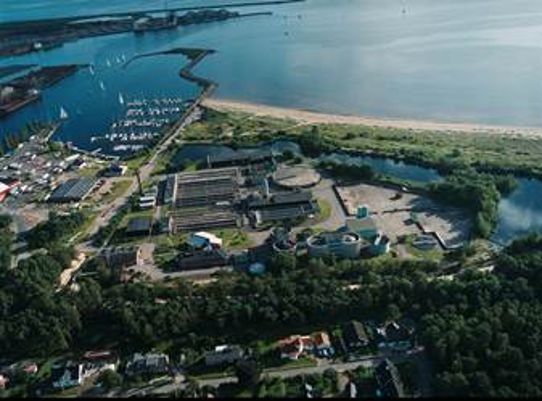Around 70 000 people from Halmstad and nearby, along with a number of industrial facilities with unit per capita waste water loading equivalent to a further 30 000 people are connected to Västra Stranden Sewage Works in Halmstad. In the event of heavy rain, there is an increased load on the sewage treatment works that has a combined pipeline system in which surface runoff and waste water are in the same pipes. Waste water is the water that comes from kitchens, washing, showers and toilets that, together with surface runoff, is called sewage. In the event of high rates of flow into the sewage works as a result of heavy rain, the sewage works is sometimes forced to overflow. Overflow means that untreated water is released into watercourses when the sewage works does not have the capacity to deal with the high incoming flow.

High rate clarification
During a major reconstruction in 2005–2006, a facility for high rate clarification was built, known as an ActiFlo facility. The job of this is to clean the sewage that the conventional treatment facility does not have the capacity to deal with in the event of high rates of flow. This is done before the sewage reaches the river Nissan and then the sea.
Västra Stranden Sewage Works has a maximum capacity of 3 000 m3/h. In the event of higher flow rates, internal treatment takes place in the high rate clarification facility, which helps to ensure that the works remains within its emissions limits. The ActiFlo process is a type of efficient direct flocculation that involves the addition of flocculation chemicals, polymer and microsand, followed by sedimentation in a laminar sedimentation system. The ActiFlo treatment can deal with up to 3 500 m3/h in total. The treated sewage is then mixed with treated sewage from the sewage works’ main line and then led into the outflow pipe. The biggest difference between this and conventional direct flocculation is that microsand is used as ballast material. This means that the floccules are heavier and sink faster.
Financing
The ActiFlo facility cost around SEK 15 million, which was paid for by Halmstad Municipality.
More examples of climate adaptation
This is one of many examples of climate adaptation. There are more in the collection of ideas being built up by the Swedish National Knowledge Centre for Climate Change Adaptation at the Swedish Meteorological and Hydrological Institute (SMHI). The collection of examples has the aim of sharing experiences and providing ideas to everyone who works with climate adaptation. Examples describe concrete measures and challenges in several subject areas. They show how different actors have worked to adapt their activities to the climate changes that are already being noticed today and those that we cannot prevent in the future.